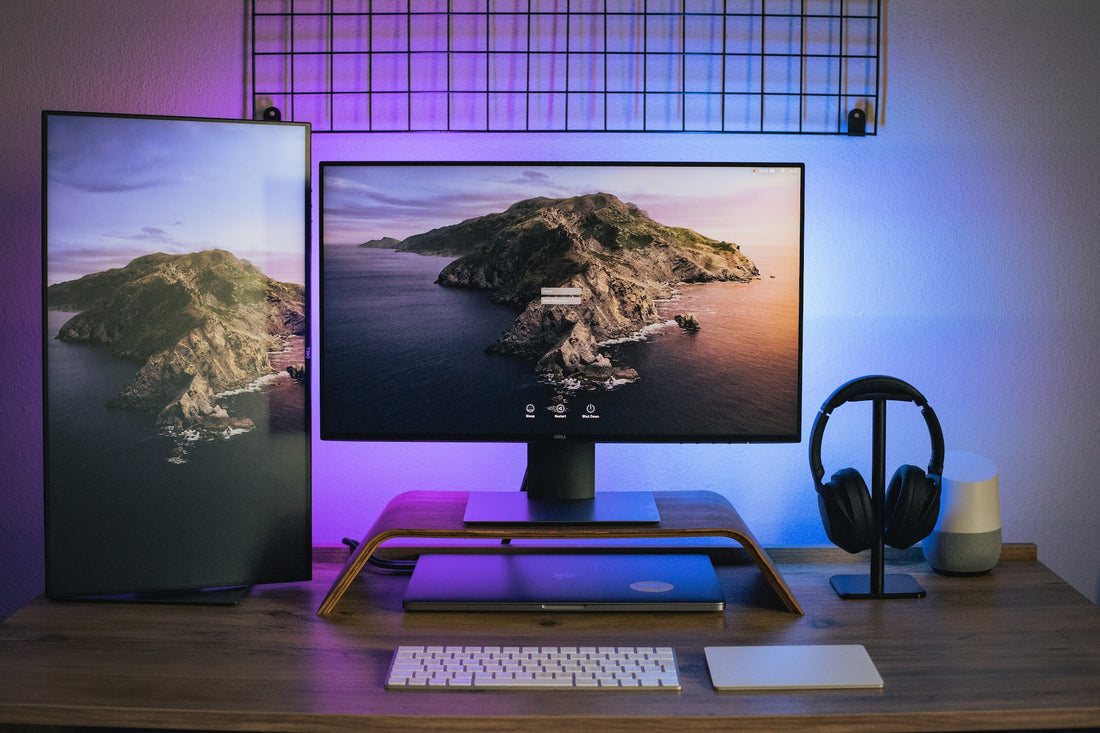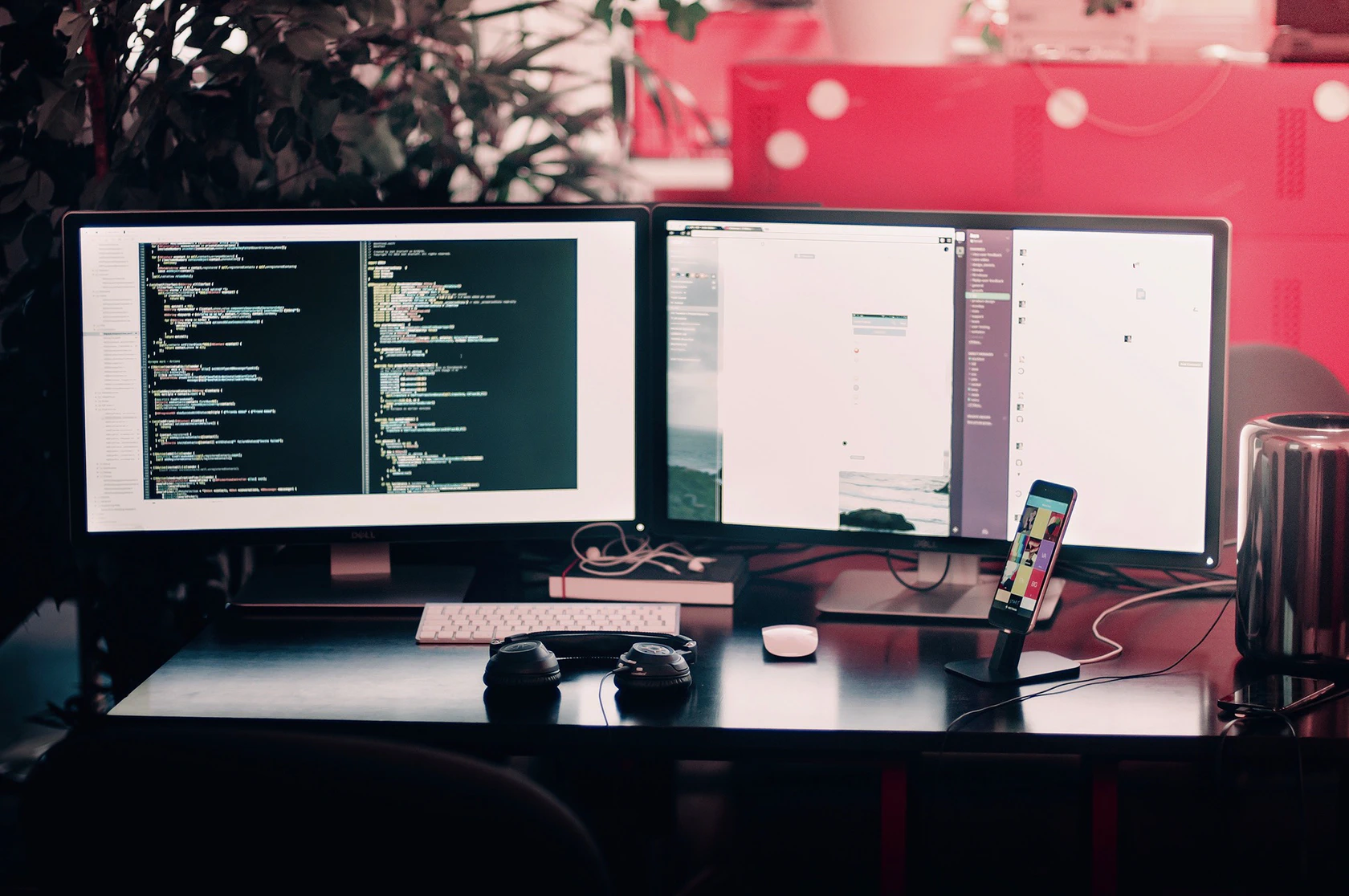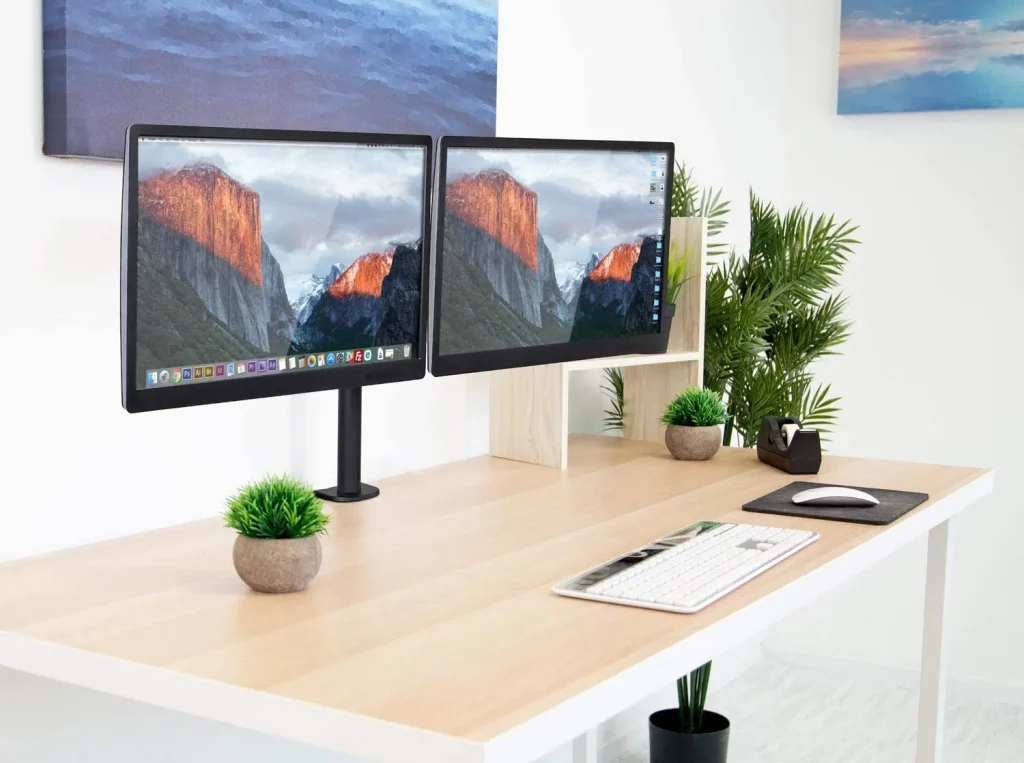A dual monitor setup can transform your workspace, enhancing multitasking and streamlining workflows. Whether you’re working from home, gaming, or managing multiple projects, adding a second screen can boost your efficiency. This guide walks you through the process of setting up a dual monitor system for maximum productivity.
Benefits of a Dual Monitor System
Using two monitors offers several advantages:
- Increases workspace, allowing you to view multiple applications side by side.
- Improves multitasking by reducing the need to switch between tabs or windows.
- Enhances focus and workflow for tasks like coding, video editing, or data analysis.
- Provides a more immersive experience for gaming or creative work.
What You’ll Need for a Dual Monitor Setup
Before starting, ensure you have the following:
- Two monitors
- A compatible computer with a graphics card that supports dual monitors
- Necessary cables (HDMI, DisplayPort, DVI, or VGA)
- Monitor stands or arms if needed

Step 1: Check Your Computer’s Capabilities
Confirm that your computer supports a dual monitor setup. Most modern laptops and desktops allow for multiple monitors, but it’s essential to verify.
- Check the ports on your computer. Common options include HDMI, DisplayPort, USB-C, or VGA.
- Access your computer’s display settings to see if dual monitors are supported.
- If you’re unsure, consult the user manual for your graphics card or motherboard.
Step 2: Select and Position Your Monitors
Choose monitors with similar sizes and resolutions for a seamless viewing experience. Position them to suit your workspace and ergonomics:
- Place the monitors side by side at eye level to reduce neck strain.
- Ensure the screens are at a comfortable distance to avoid eye fatigue.
- Use a monitor stand or arm to optimize space and adjust the angle.

Step 3: Connect the Monitors
Use the appropriate cables to connect your monitors to your computer.
- For desktops, plug the cables into the ports on your graphics card.
- For laptops, connect one monitor to an available port and use a docking station or adapter if necessary for the second monitor.
Ensure the cables are securely connected, and the monitors are powered on.
Step 4: Configure Display Settings
Once the monitors are connected, adjust your computer’s display settings to configure the dual monitor setup.
- On Windows:
- Right-click on the desktop and select Display settings.
- Under “Multiple displays,” select Extend these displays to use both monitors as an extended workspace.
- Drag and arrange the monitor icons to match the physical layout of your screens.
- Adjust resolution and scaling as needed for each monitor.
- On macOS:
- Go to System Preferences and select Displays.
- Click on the Arrangement tab to arrange the monitors.
- Enable or disable Mirror Displays depending on your preference.
Step 5: Optimize Your Workspace
To make the most of your dual monitor system:
- Use productivity apps like window managers to snap and organize windows.
- Dedicate one screen to primary tasks and the other to reference materials, communication apps, or secondary tasks.
- Customize your background to create a cohesive look across both screens.

Step 6: Test Your Setup
Ensure your dual monitor system is working correctly. Open applications, drag windows between screens, and test display quality. If any issues arise, check your connections and update graphics drivers.
Tips for Maximizing Productivity with Dual Monitors
- Create a layout that suits your workflow: Place frequently used applications on the main monitor and secondary tools on the second screen.
- Use keyboard shortcuts: Learn display-related shortcuts like moving windows between monitors.
- Maintain consistent brightness and color: Adjust monitor settings to match brightness and color profiles for a unified appearance.
- Upgrade your workspace: Invest in an ergonomic chair, desk, or monitor risers to enhance comfort.
Troubleshooting Common Issues
- Monitor not detected: Check cable connections, restart your computer, and ensure the monitors are powered on.
- Incorrect resolution: Adjust the display settings for each monitor to ensure proper resolution.
- Uneven color or brightness: Calibrate the monitors to achieve consistency.
- Lag or stuttering: Ensure your graphics card can handle multiple monitors, and update the drivers.
Conclusion
Setting up a dual monitor system is a simple yet powerful way to enhance productivity. With the right hardware, configuration, and organization, you can create a workspace that supports your goals and improves your workflow. Whether for work, gaming, or creative tasks, dual monitors offer a versatile solution for anyone looking to maximize efficiency.


